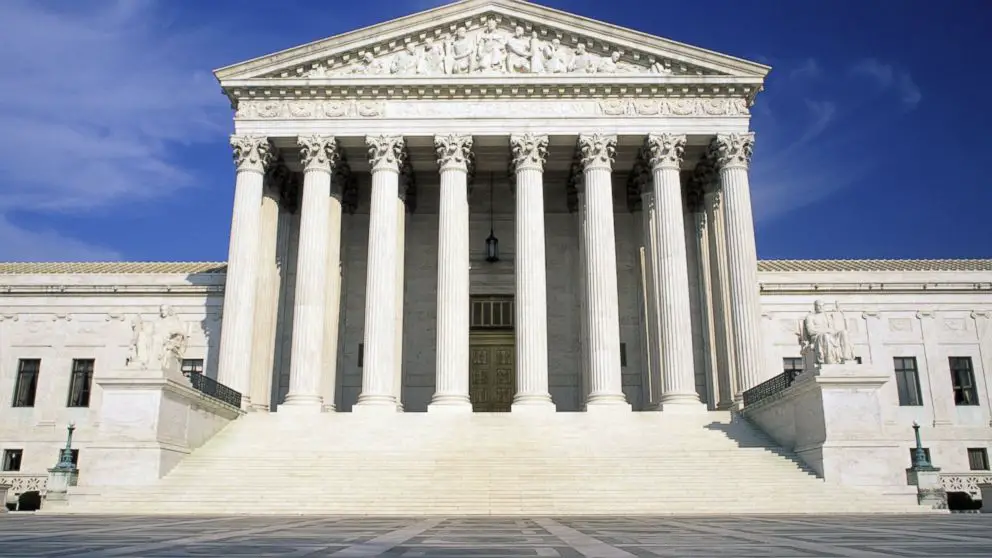The New Jersey Supreme Court might have thought it was dropping a bombshell when it ruled that gay and lesbian committed couples deserved the same legal benefits as heterosexual married couples under the state’s constitution. But the justices achieved something else: they fired off a dud.
The reality is that both sides in the battle on gay and lesbian equality were shortchanged in New Jersey, and it’s easy to expose the ruling for what it is: the judicial equivalent of offering to saw a baby in half to see which side will raise the loudest protest. But the muted national reaction to the ruling suggests that neither side knows what to make of it. In effect, the justices left the heavy lifting to the legislature, not to the courts. Whether gays and lesbians are to be allowed to marry, or be afforded a parallel institution such as civil unions, remains solely in the hands of politicians.
By not requiring gay “marriage”, the New Jersey justices in the majority appeared to side with the court of public opinion, which still views “marriage” as the preserve of heterosexuals alone. But before damning the New Jersey ruling for what it did not do, it’s worth noting what it managed to accomplish. Life for gay and lesbian couples in the Garden State will now improve because they can receive state benefits that will make it easier to maintain and create the families and raise the children that many of them already have.
Some gay and lesbian groups have praised the ruling for being fair-minded, logical, and politically savvy. Here’s another view: all of us are fooling ourselves if we pretend the ruling does anything other than continue to put gay and lesbian couples in the back of the bus.
We have been down this road before. From 1896 through 1954, states in this country were allowed to satisfy Constitutional requirements for the equality of African-American citizens as long as they provided an experience equivalent to what was afforded white citizens. Today, we know these “separate provisions” for African-Americans were far from equal, especially in the areas of schools and housing. But even if these parallel worlds had been completely identical, they could never attain true equality.
The U.S. Supreme Court said as much in Brown v. Board of Education when it exposed separate systems as a way of keeping an “undeserving” group from participating in something enjoyed by the majority. (The logic is simple to follow: if the minority was truly deserving of equality, there would be no reason for a separate system to exist.) In 2004, the Supreme Court of Massachusetts “got it” – and showed it understood the rule of law established in Brown by recognizing that anything less than full marriage equality would be a sham.
Let’s be blunt. The issue we face – then and now – is state-sponsored inequality. The strongest part of the New Jersey ruling is found in eloquent words from the Chief Justice in dissent: “Labels set people apart as surely as physical separation on a bus or in school facilities.” And by declaring gays and lesbians as “distinct,” the justices in the majority clearly imparted the label of inequality.
If called to defend their ruling, the justices might cite how gay marriage is problematic because it is wrapped in religious connotations of the term. But the answer to that is for the state to make all of its benefits available to “civil unions,” not to deprive gay couples of the ability to have the exact same status that heterosexual couples enjoy.
Maybe it is asking too much from the majority of society for them to relinquish the belief that gay and lesbian couples are somehow not as good as heterosexual couples. But even as we rail against the majority, we deceive ourselves by pretending that civil unions and marriage are the same thing. If self-appointed progressives in our society promote “separate and equal” relationship structures for gay couples, we should expose this position for what it is: a comfortable way to placate the majority’s need to feel both separate and superior.
It might seem disingenuous for a gay law professor to decry the “failings” of the New Jersey court. Perhaps I should hail the fact that a separate and parallel track for gay and lesbian couples, which includes the same legal benefits as marriage, represents remarkable progress considering that only six years have passed since civil unions themselves were considered enormous progress. And perhaps I should take heart that the first gay relationship benefits in Europe got their start in unions separate and distinct from historical marriage, and today we can properly marvel at how far some countries on that continent have progressed.
But while it is tempting to applaud a system in which gay and lesbian couples appear to be making progress towards equality with heterosexual married couples, I fear the opposite may be true. Once you agree to sit in the back of the bus, it becomes harder to claim the right to change your seating position.
Is the New Jersey Supreme Court’s ruling a step forward for gays and lesbians? It clearly aided many existing people and families. But I worry that the court’s decision may ultimately push a step backwards into the grey dimness of “separate but equal.” Only time will tell.

